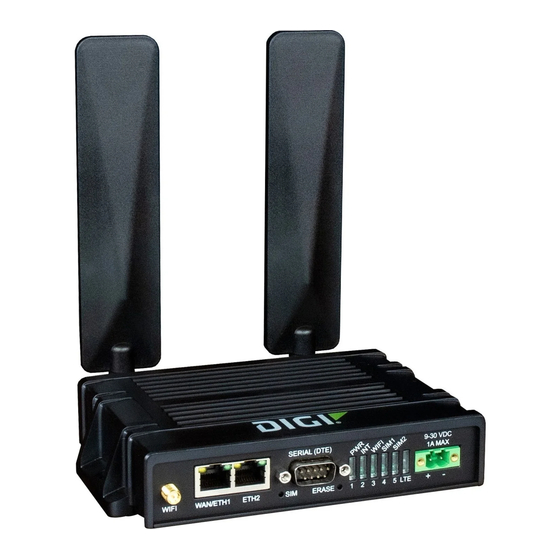
Digi IX20-WAG4 Manuals
Manuals and User Guides for Digi IX20-WAG4. We have 1 Digi IX20-WAG4 manual available for free PDF download: User Manual
Digi IX20-WAG4 User Manual (882 pages)
Brand: Digi
|
Category: Network Router
|
Size: 16 MB
Table of Contents
-
-
-
Interfaces
54-
-
Bridging159
-
-
Serial Port
167 -
Wi-Fi
185 -
Routing
230-
IP Routing231
-
Dynamic DNS258
-
-
-
Ipsec289
-
Ipsec Modes289
-
Authentication290
-
Openvpn337
-
Nemo389
-
L2Tpv3396
-
-
Services
404-
Configure DNS432
-
Show DNS Server438
-
-
-
Modbus Gateway475
-
System Time492
-
Applications
522 -
-
Local Users595
-
Ldap618
-
Firewall
642-
Packet Filtering654
-
Containers
674 -
-
Monitoring
724 -
-
Learn more753
-
File System
755 -
Diagnostics
765-
-
View System Logs767
-
View Event Logs769
-
-
-
-
Safetywarnings
804-
English804
-
French--Français807
-
Polish--Polskie813
-
Slovak--Slovák815
-
Spanish--Español817
-
-
-
-
Show Config827
-
Show System828
-
Show Network828
-
-
Advertisement
Advertisement
